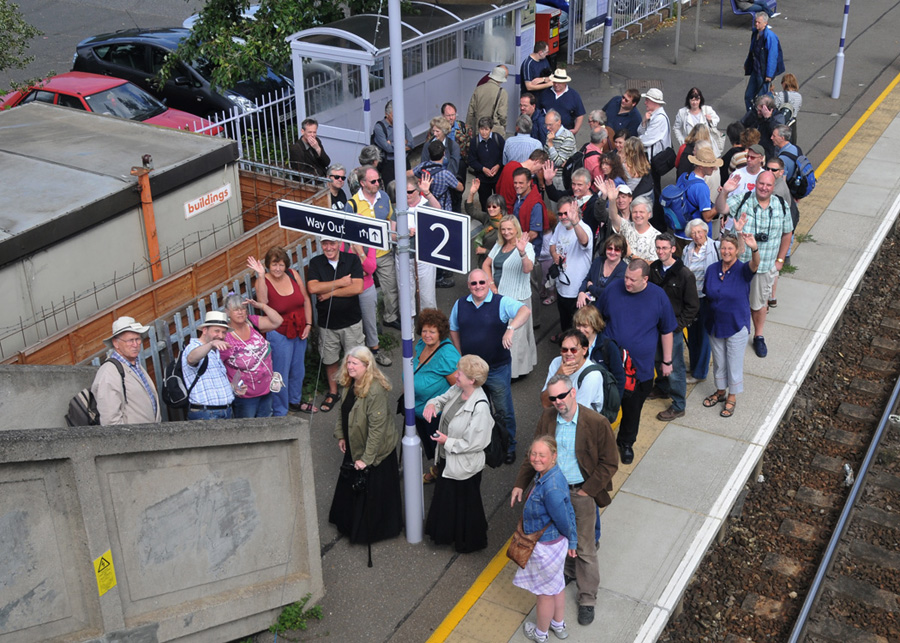
1:30pm Chilham station, and a 65-strong group of A Canterbury Tale enthusiasts give a quick wave to the photographer before setting off on the afternoon's eagerly anticipated location walk. Paul and Steve are in the stylish hats on the left of the photo.
|
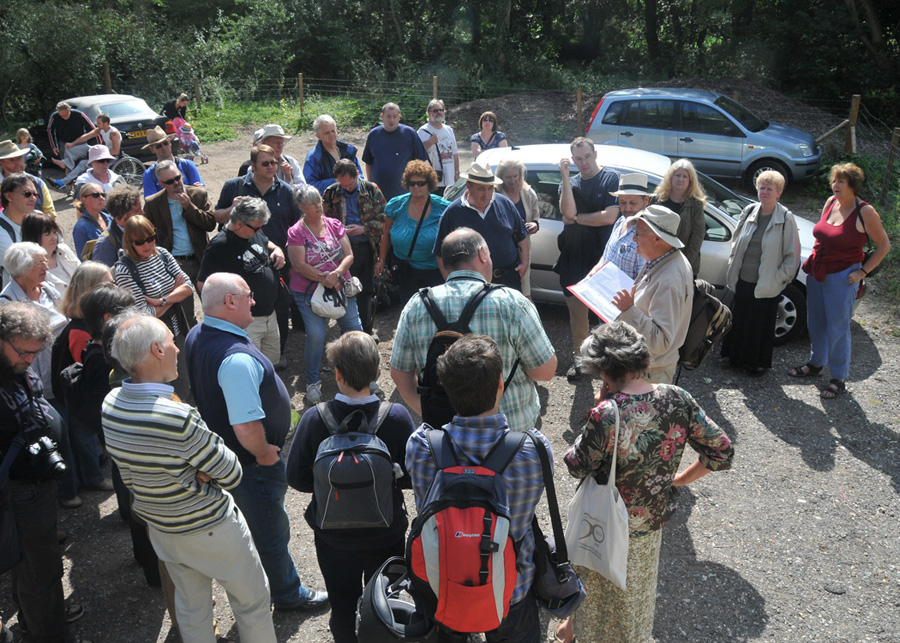
In the vicinity of Chilham mill, Paul tells us about the film's celebrated river battle scene.
|
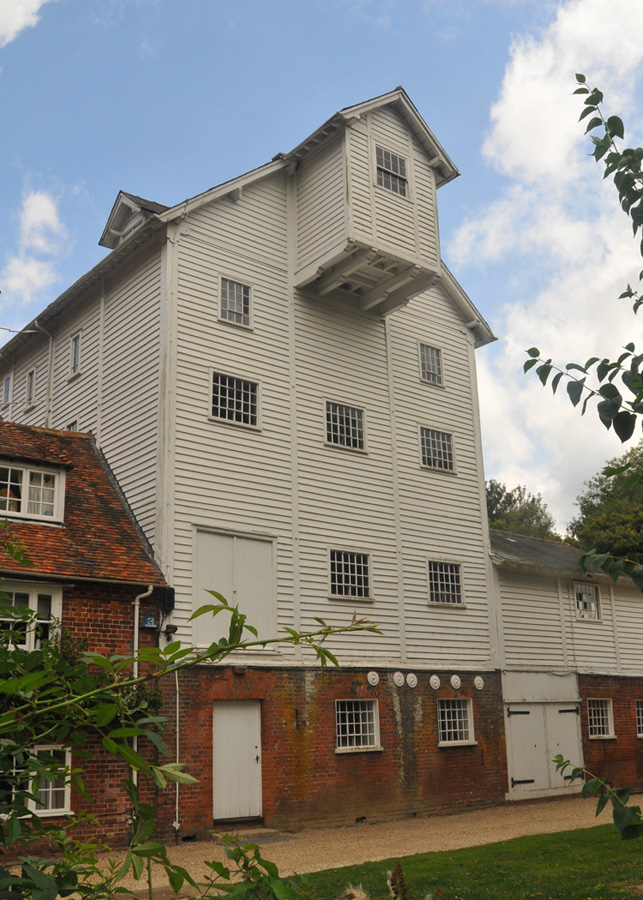
Chilham mill as it looks today
|
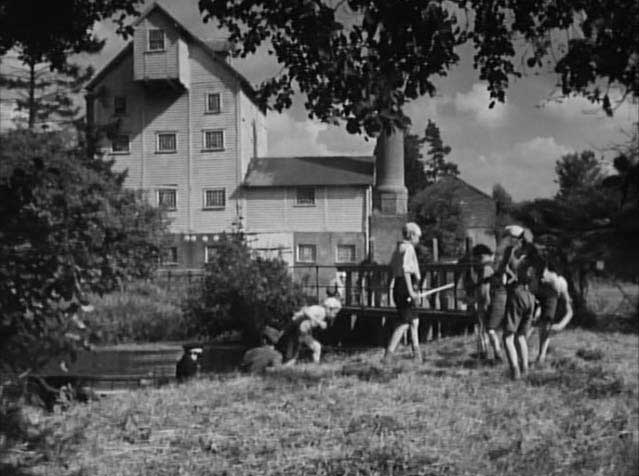
Compare that with Chilham mill as it looked in the film
|
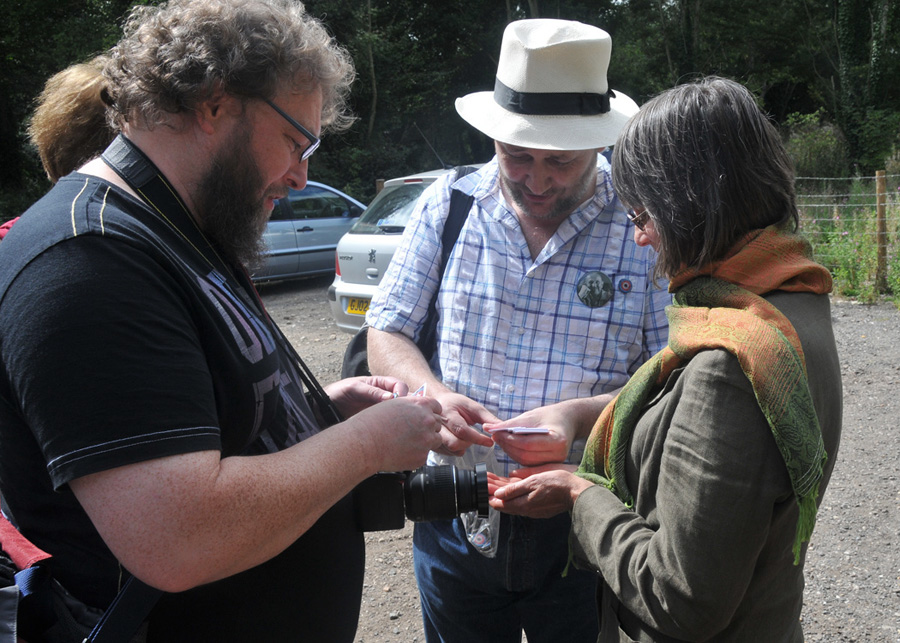
Here we see Steve busily handing out his 'A Production of the Archers' badges and Powell and Pressburger Appreciation Society (PaPAS) cards.
|
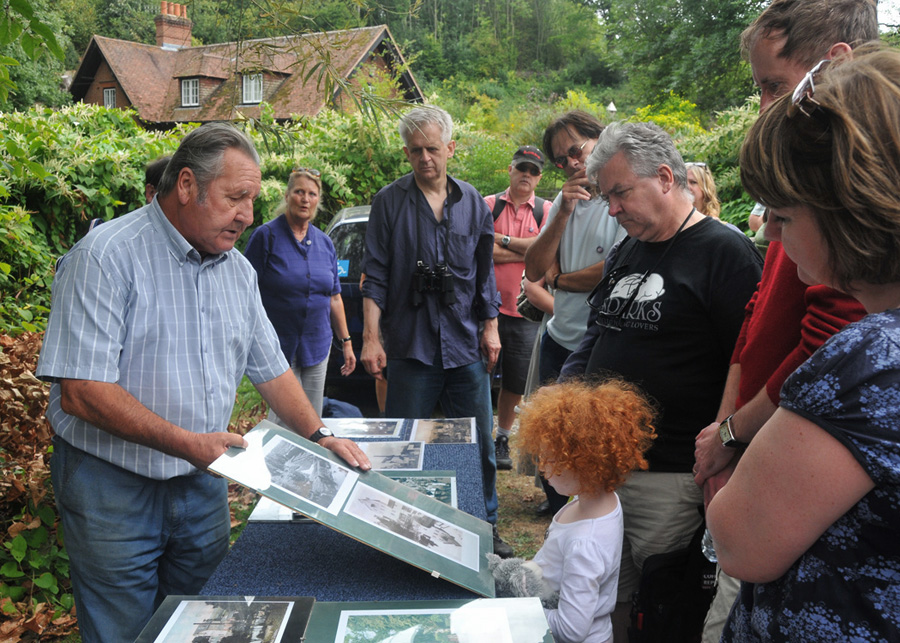
A lot of interest was shown in John Clark's wonderful collection of postcards, photos and memorabilia of Chilham and the other villages in the area that were used in the film.
|
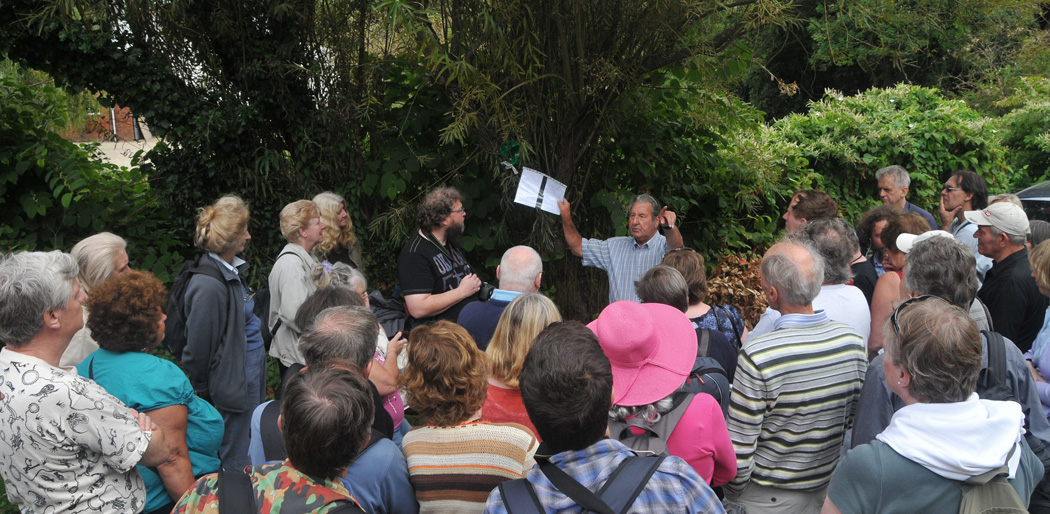
John talks about the history of the mill and some features of interest around it.
|
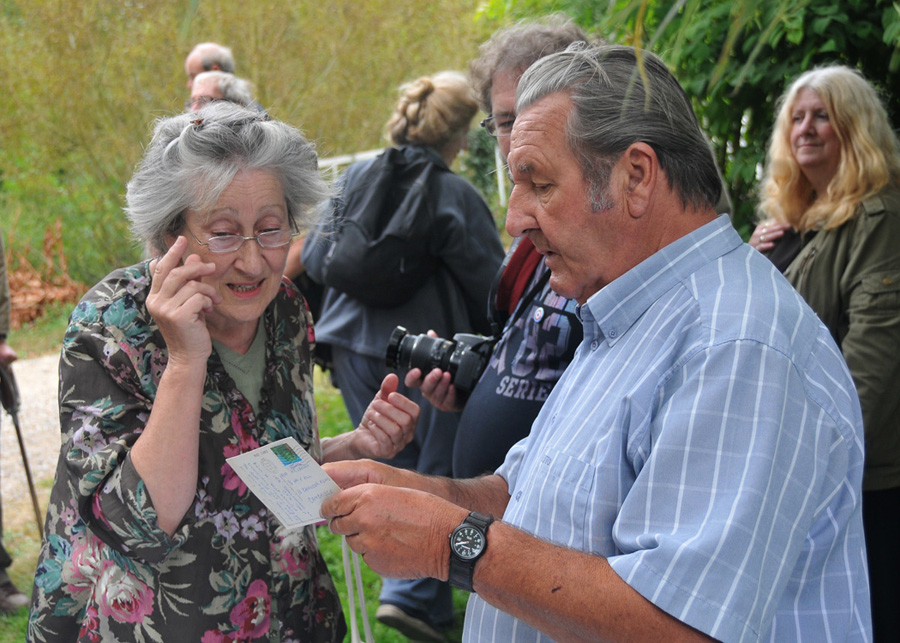
John describes the merits of one of his postcards with regular 'Location Walk' attendee Helen Lawson. Helen later proved to be an excellent 'Alison' in her reading of lines from key scenes in the film.
|
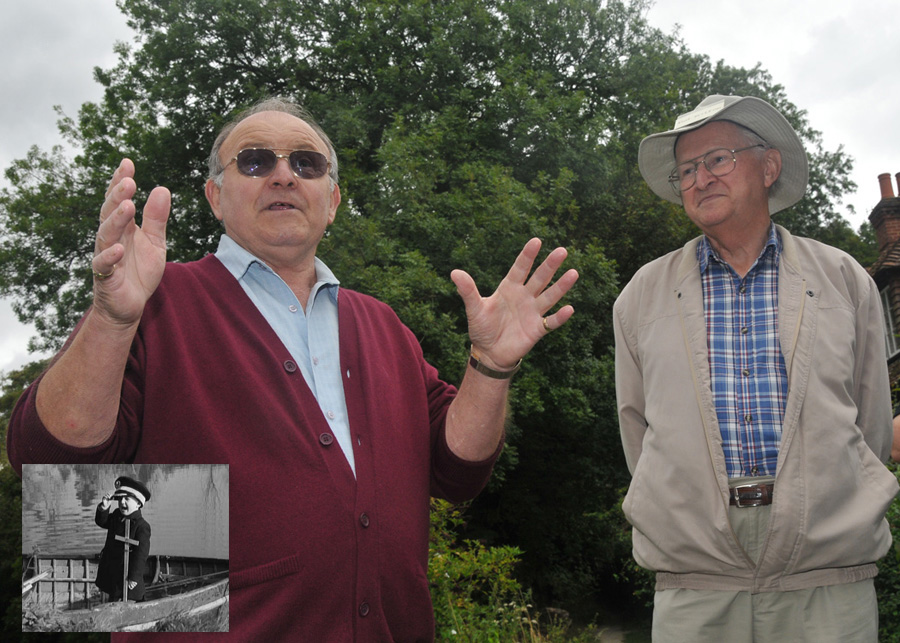
David Todd throws light on a mystery that has been baffling (some) ACT viewers for over 60 years; why was the 4 year old David crying in the back of the boat during the boys' river battle scene? The simple answer, David explained, was that he burst into tears whenever he saw the camera operator (the late Cecil Cooney). Or was it the actual camera that frightened him? I'm not entirely sure as I was busy lining up this shot!
|
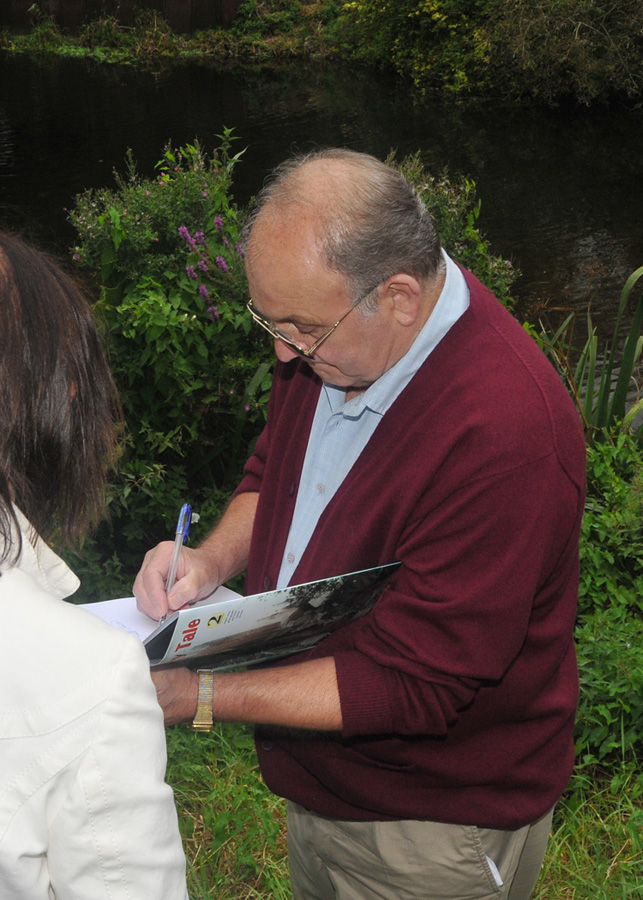
With the explanation of why he was crying in the film out of the way, a dry-eyed David gets down to the serious business of signing an admirer's copy of Paul Tritton's excellent 'A Canterbury Tale - Memories of a Classic Wartime Movie'.
|
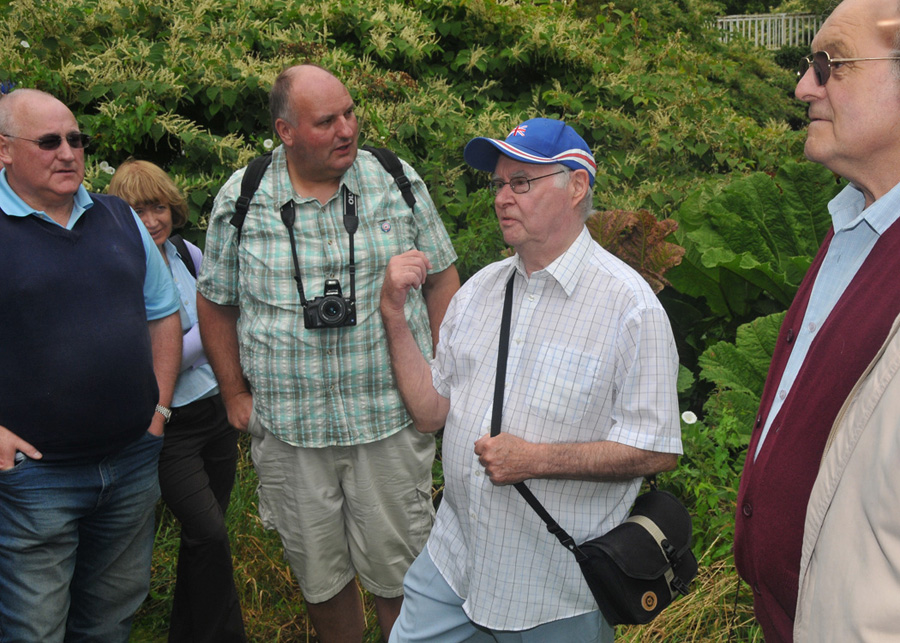
Len Smith recalls the fun he had playing General Leslie in the film.
|
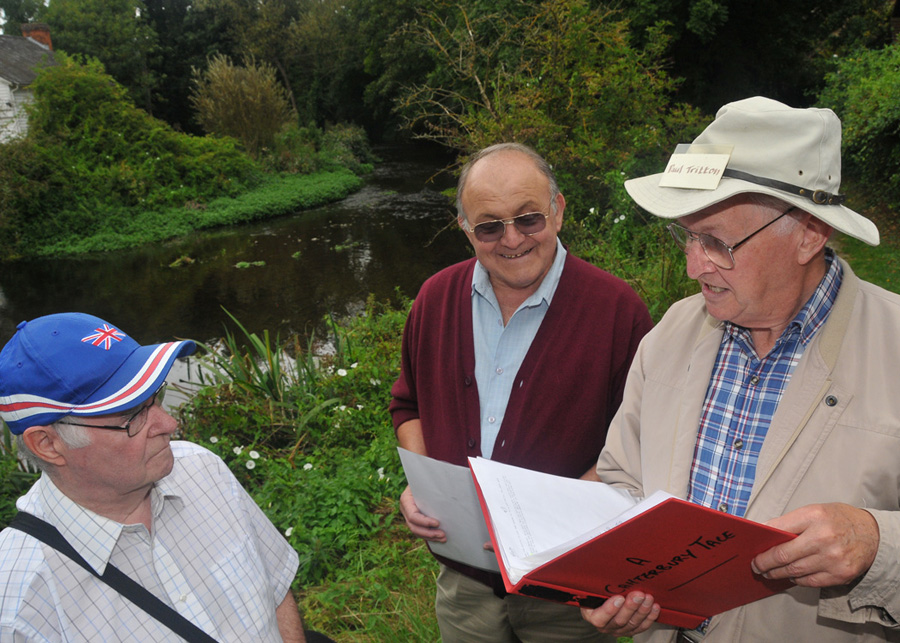
Len and David look on as Paul recalls key moments from the river battle scene.
|
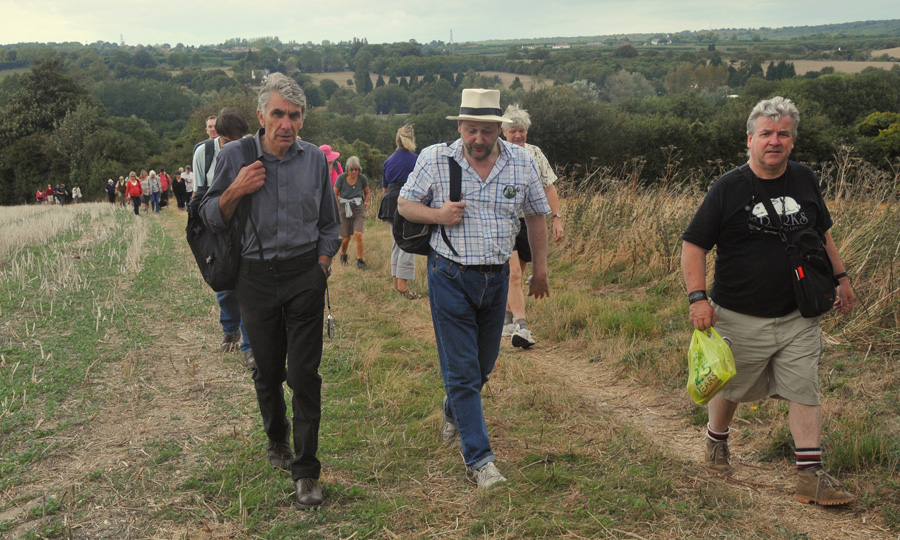
Steve leads the way as we leave the Great Stour behind and head towards a field for a reading of the 'Ambush' playlet and a view of Old Wye Lane and the 'Rye Field'.
|
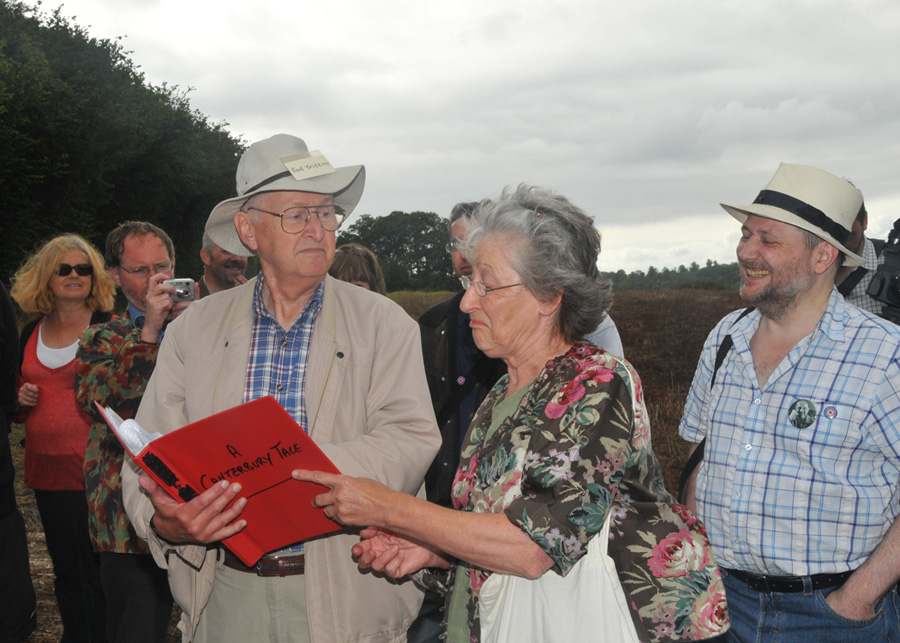
'Alison' (Helen Lawson) shows her dismay at what she feels is the very unreasonable behaviour of 'Peter Gibbs' (Paul Tritton) during a reading of lines from the 'Ambush' scene.
|
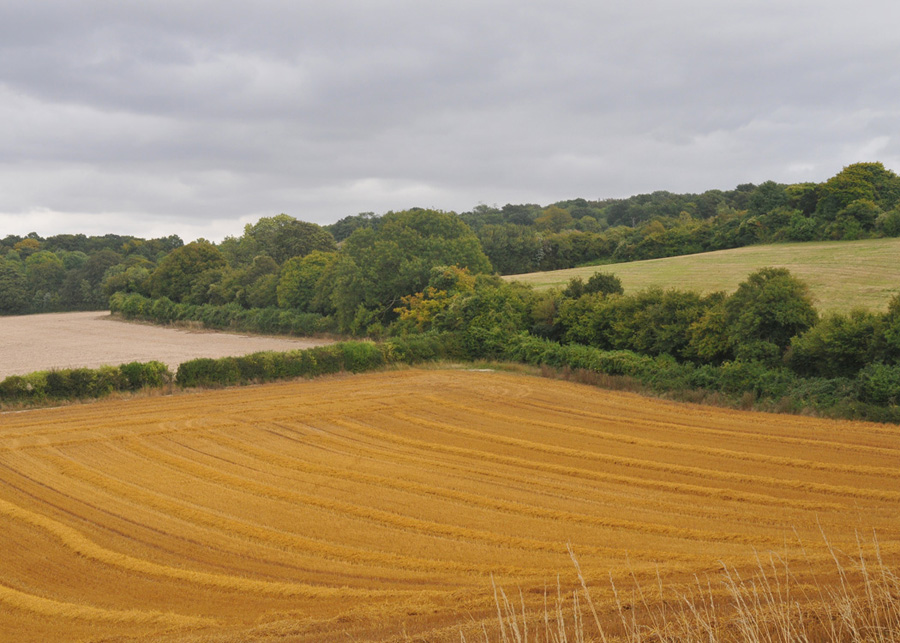
The view across to Old Wye Lane and beyond it, the Rye Field.
|
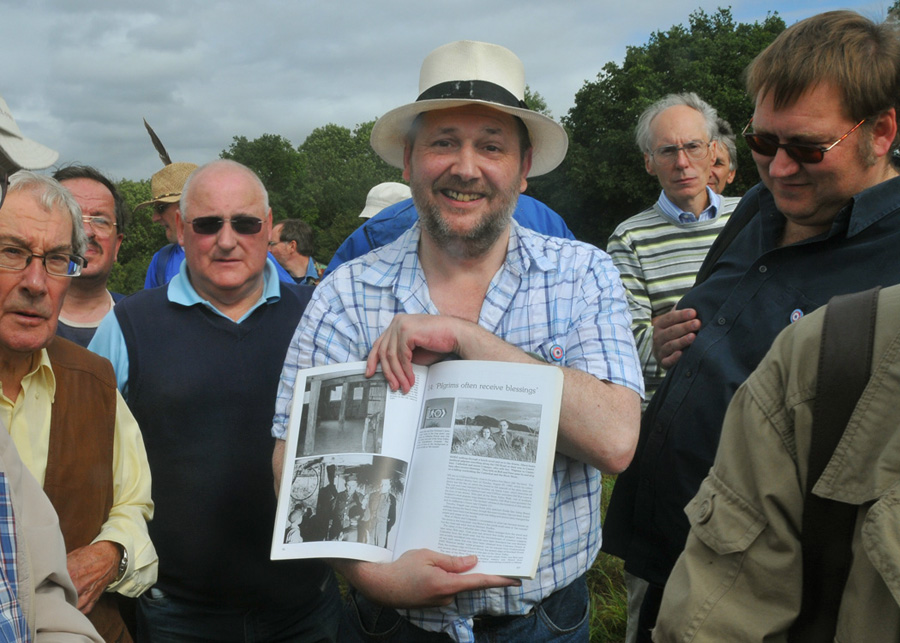
Steve prepares us for a reading of lines from the famous 'scene in the long grass'. In the left foreground is Jim Pople, 2nd Assistant Film Editor on A Canterbury Tale and on the right, in sun glasses, is the imposing figure of Michael Eyers, another regular location walk attendee.
|
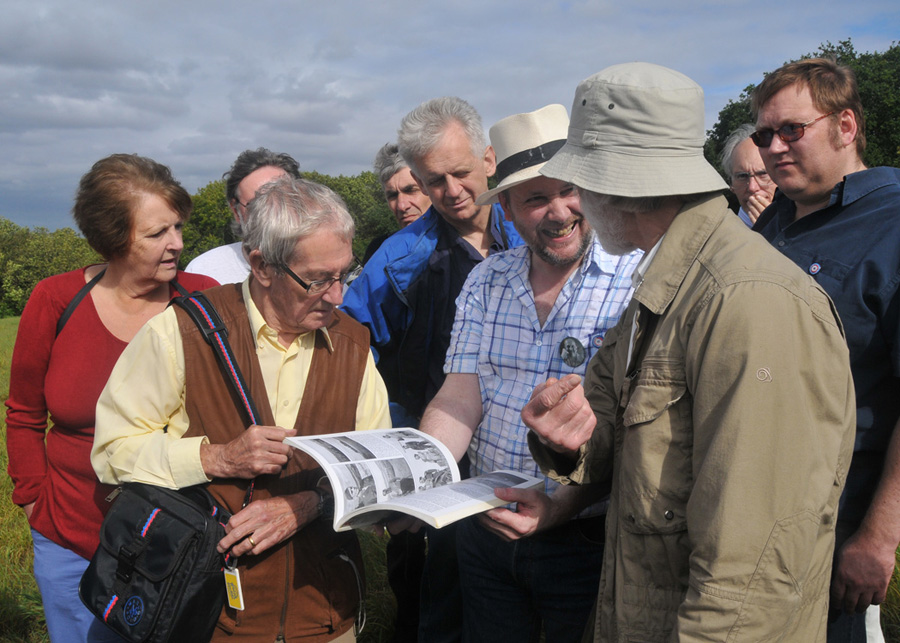
Steve enjoys a light-hearted exchange with one of the group.
|
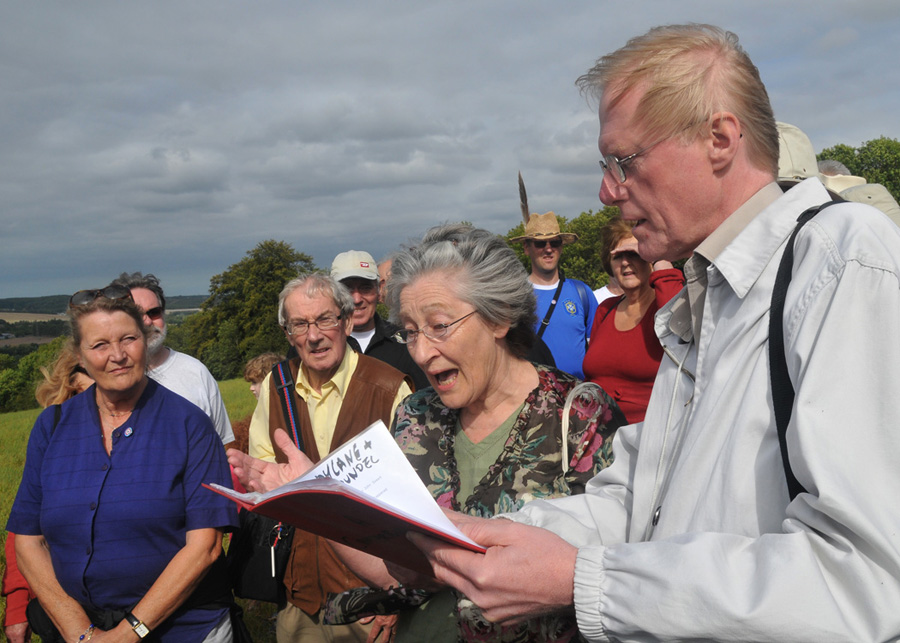
The 'scene in the long grass' with Helen Lawson in full flow as 'Alison'. John Tritton is 'Colpeper'.
|
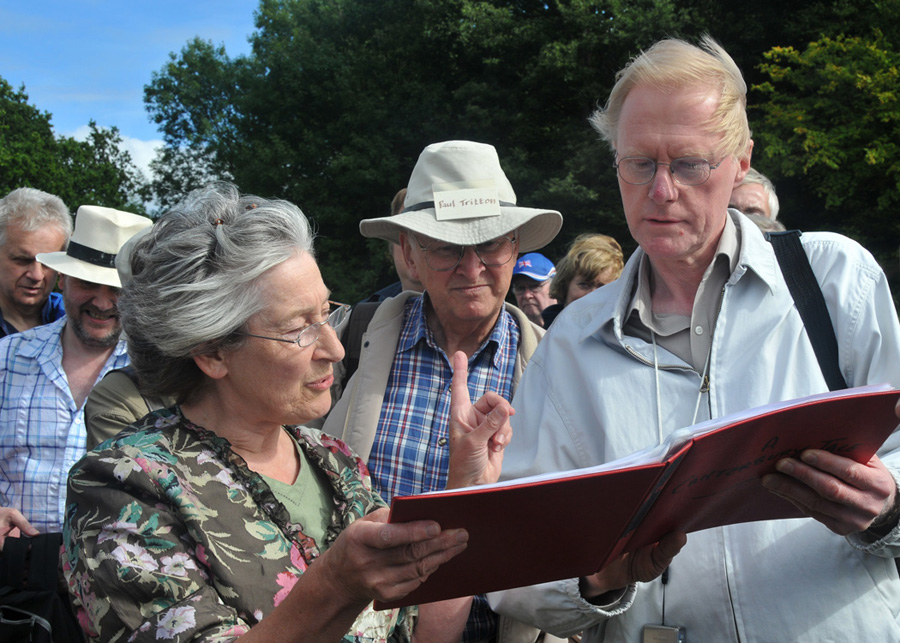
Helen and John continue with the scene. Steve and Paul listen intently along with everyone else. Right at the back, in blue cap, is the unmistakeable face of Len Smith ('General Leslie').
|
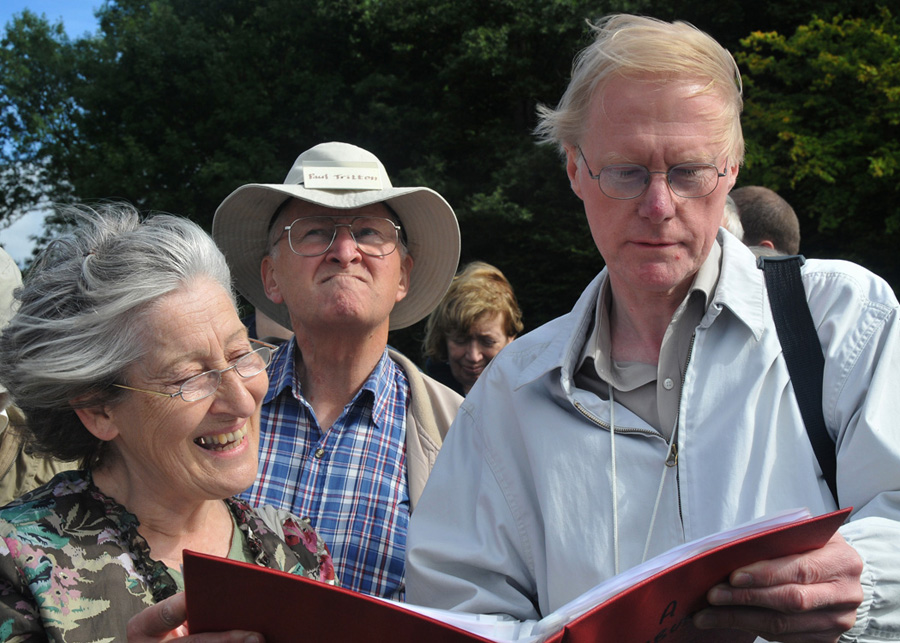
Helen & John conclude the scene while Paul (looking uncannily like Bruce Forsyth!), watches as the Red Arrows fly past overhead.
|
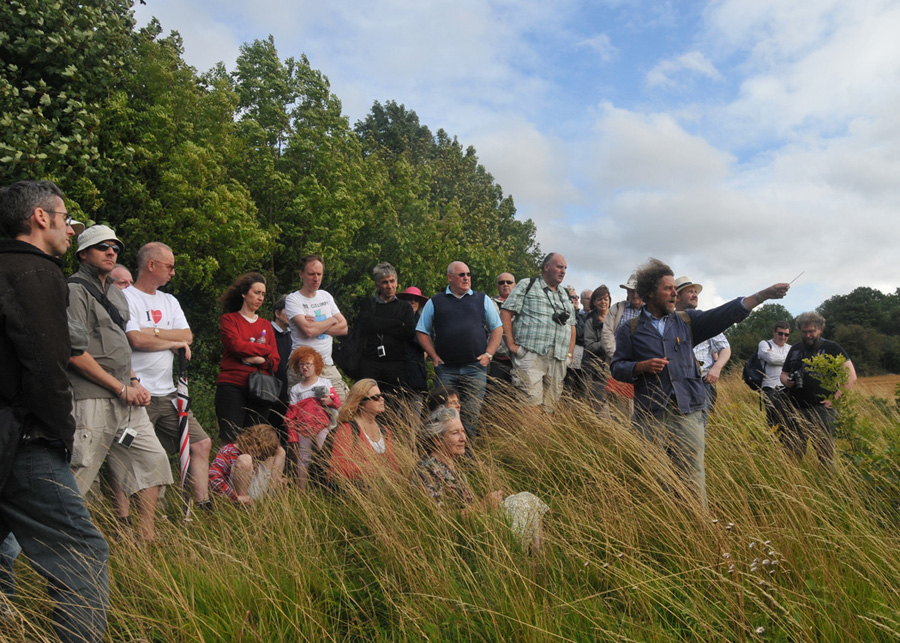
Bryan Hawkins, from Canterbury Christ Church University, gives a very interesting talk on the use of landscape in this and other Powell & Pressburger films.
|
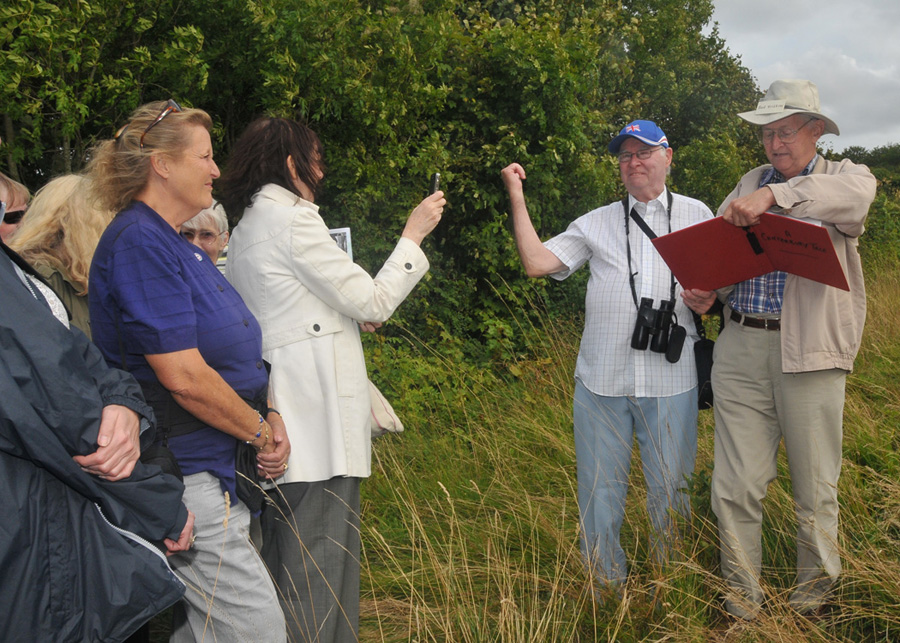
Back onto Juliberrie's Grave once again, Len Smith re-enacts his role in the 'Conference on "pow-wow hill"'.
|
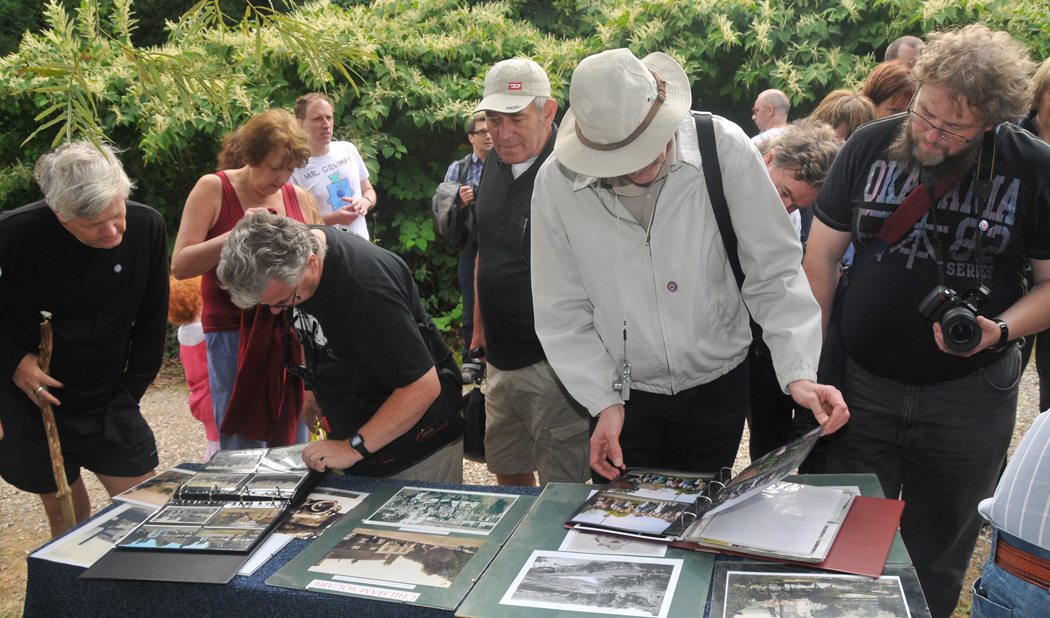
Time for one last look at John Clark's collection of postcards, photos and other ACT memorabilia.
|
























